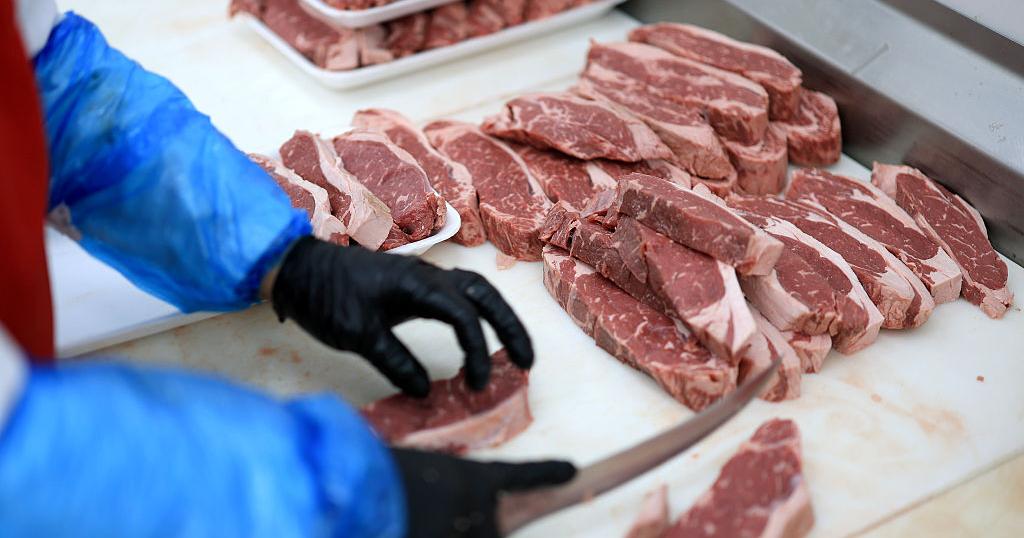Copyright berkshireeagle

Beef is no longer a grocery staple. It is becoming a luxury commodity, priced out of most consumers' everyday budgets. The average price of ground beef is now $6.30 per pound. Steaks are averaging $12.22 per pound. Ranchers want to keep it that way, but the president begs to differ. In total, beef prices are hitting record highs as the U.S. cattle herd falls to its smallest size since 1951. From around 140 million head of cattle in the U.S. back in the '70s, the herd has dropped to 94 million head. Recently, even Donald Trump had to admit that beef prices are out of control. "The only price we have that's high is beef — we'll get that down," the president said recently. No doubt his consumption of Big Macs has kept him focused on the price of ground beef while ignoring skyrocketing prices in other food items. Trump blamed the stubbornly high beef prices on reduced imports from Mexico and domestic drought conditions (but refused to acknowledge climate change). His solution — quadruple beef purchases from Argentina and apply a lower tariff rate. In his mind, he saw a two-fold opportunity. Prop up his buddy, Argentinian President Javier Milei's election chances and, at the same time, "bring our beef prices down." As you may surmise, cattle ranchers were beginning to benefit from these nationwide higher prices after years of losses. Some were even considering investing their profits back into rebuilding their herds. So, additional imports were not on their wish list. But not all is as it seems. American ranchers' response to his efforts surprised him, and the blowback came from across the industry. "Misguided," "an absolute betrayal," "a kick in the nuts," "he is picking winners and losers," — those were just some of the comments from ranchers I have read. The outcry was so extensive that about the only ranchers who did not voice their concerns were the Duttons. As I have explained to readers in past columns, over the past decade, due to climate-driven droughts, inflation and surging feed costs, ranchers struggled to survive. At the same time, consolidation among meatpackers and feedlots produced fewer buyers at auction for their cattle. Fewer buyers meant lower prices. Many could not survive, others limped along making few ends meet. I asked myself why, after years of price increases, it is only now that some ranchers are turning a profit of sorts. Does it require a 14.7 percent increase in prices over the last 10 months, on top of prior years' hikes, for ranchers to turn a profit? And if not ranchers, who is benefiting? Most ranchers in America are long-term supporters of Donald Trump. However, many see the administration's policies toward cattle production as far too simplistic to solve their real issues. Here once again, state capitalism has reared its misguided head. The U.S. imports beef from dozens of countries and has done so for years. This year, despite record-high beef prices, Trump levied tariffs on U.S. imports of cattle, thinking this would help his voting bloc in cattle country not only turn a profit but also increase American beef production. Wrong. Not only did he make an already bad situation for consumers much worse, but at the same time, despite these higher prices, ranchers saw little increase in the price they received for their livestock at the auction block. Why? Ranchers claim that the meatpacking industry is the sector benefiting from the higher beef prices. You may recall that just four meatpackers control 85 percent of the U.S. beef market. Thanks to the president's tariff policies, continued inflation, and the immigration crackdown, processors face their own problems despite charging more for their products. That leaves individual ranchers as price takers with these huge conglomerates dictating prices at auctions. As for increasing cattle supply, that takes years. Trump will be long gone before that happens, and so will his secretary of agriculture, Brooke Rollins. In the meantime, the increase in Argentine beef will have at best a negligible effect on U.S. retail beef prices. Argentina produces about one-quarter of total U.S. beef output, making it the sixth-largest beef producer in the world. Yet, as an exporter to the U.S., Argentina ranks only ninth, supplying no more than 2.1 percent of total U.S. beef imports thus far in 2025. What Trump's announcement has done, however, is immediately lower the auction prices ranchers are now receiving for their cattle. Still, it was effective in manipulating the Argentine elections in favor of his crony. If you didn't understand state capitalism before, I suspect you do now. Ranchers say that they are looking for market-based solutions, such as making it easier for startups to enter the business. They also want mandatory country-of-origin labeling, reduced costs for meat processors (read: immigration and tariff relief), and expansion of federal grazing lands. Some of these policies are already being rolled out. However, none of these actions will likely increase the herd or lower prices for years to come. As it is, the population is rapidly changing its diet preferences, and if it continues, there will be little need to grow the cattle population. We are getting to that point quickly. Most people I know reserve meat consumption for special occasions, like graduation dinners, client lunches, or a once-a-week special grilling event. Given that the USDA retail price per pound of chicken is $2.08 and pork is $4.29, we rarely eat meat at our house. Our meat consumption has dropped from several times a week five years ago to at best twice per month. There are benefits as well: the medical literature indicates that consuming less meat is a healthier choice for living longer. I often say that the solution to higher prices is higher prices. Our newfound experiment in state capitalism, at least in the ranching industry, may preserve America's myths of cowboys and TV "Yellowstones," but at what cost? What does that say about the cost-effectiveness and efficiency of having a "protected" U.S. industry that requires $12/lb. steak to survive at all?



